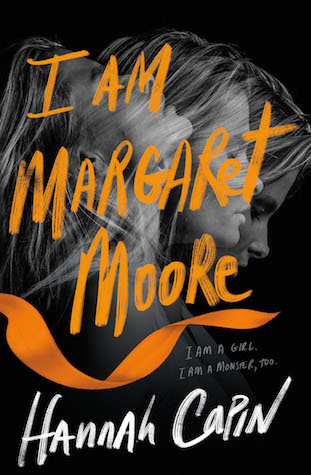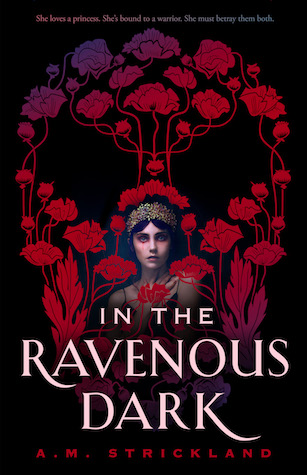
TL; W[on’t]R[ead the review]: I am calling it now. This is THE BEST BOOK OF THE YEAR. I cannot process how amazing this book is, from the writing to the characters to the worldbuilding to the plot to the politics…it’s all stellar. I’m not remotely going to be able to do this fucking masterpiece justice, so just read the book, if you’re in a space to deal with the massive content/trigger warnings listed below.
Content warnings: sexual assault, murder, body horror/graphic bodily transformation, dismemberment, lynchings (graphic memories), self-harm, gaslighting, animal mutilation/death. (**This is not a comprehensive list, as my memory isn’t great.**)
Summary [courtesy of Goodreads]: Vern – seven months pregnant and desperate to escape the strict religious compound where she was raised – flees for the shelter of the woods. There, she gives birth to twins, and plans to raise them far from the influence of the outside world. But even in the forest, Vern is a hunted woman. Forced to fight back against the community that refuses to let her go, she unleashes incredible brutality far beyond what a person should be capable of, her body wracked by inexplicable and uncanny changes. To understand her metamorphosis and to protect her small family, Vern has to face the past, and more troublingly, the future – outside the woods. Finding the truth will mean uncovering the secrets of the compound she fled but also the violent history in America that produced it.
[Note: This review is based on an eARC from NetGalley and FSG.]
Despite the incredibly dark subject matter and themes of this book (I mean, look at the content warnings alone), Sorrowland shocked me with how vibrant, tenacious, and insistently caring its main character Vern and the world she forges for herself are. Fundamentally, this novel is about so many things, from the power of found family to the dangers of the US government, but one of the things that struck me most deeply was how Solomon emphasizes the power of wildness and the ways in which tenacity can cause both horrifying AND miraculous results. It’s a work about vicious persistence and unexpected, transcendent survival, and it’s also an up-all-night page-turner, weaving together razor-sharp political commentary, a complex philosophy of nature, and a gradually unspooling horror-thriller that so far surpasses classics of those genres as to be in its own, singular league.
SPOILER TERRITORY
I have 5 pages of quotes noted down from this book, something I haven’t done since I was in grad school. But this novel, more than almost any other, makes me want to revisit those old academic roots. It’s worth reams of essays–entire collections devoted to its intricacies and craft. I wish I could talk about it in a series of seminar meetings. However, that sounds daunting, and I could only do a disservice to this book by ham-fistedly picking it apart, so I’ll content myself with a few musings here:
Main character Vern is one of the most fascinating protagonists I’ve ever encountered. Raised in the Blessed Acres of Cain, an all-Black cult and compound, Vern is a budding masochist (and closeted lesbian) who’s married off to the cult leader at 13. She also has albinism and nystagmus, which means she’s never been able to learn to read in a society with no accommodations for her vision disability. The novel opens with her giving birth to twins in the forest soon after fleeing the compound at 15. Her relationship with her twins, whom she names Howling and Feral (!!) on a whim, is unlike anything I’ve read. They’re closer than anything, but they all have a fierce independence as well. (Or, as the narrator so poetically puts it, “They were both her raw parts, her every sensitivity.”) The way Vern educates them is fascinating and galvanizing to see: the limitations of their forest upbringing combine with Vern’s politically and pedagogically astute instincts to make a pair of incredibly precocious kids who still make ‘cute’ mistakes for the reader to coo over. (I loved their introduction to “electricity food,” and the way Feral scoffs at flimsy modern napkins.)
Sexual relationships in the novel are also complex as fuck, from Vern’s first experience, at 15, with a woman–who later turns out to be the monstrous “fiend,” Ollie, who’s been pursuing her for years in the forest, and whom she tries to murder in self-defense–to her much more healthy (but still emotionally fraught) relationship with Oglala medic Gogo, who is “winkte” in her own Lakota framing (sometimes glossed, outside the novel, as trans or 2-spirit). Solomon does absolutely gorgeous, subtle, and naturalizing things with gender and gender expression here, from allowing Gogo to identify herself with a Lakota word that only gets a partial definition in English, to Howling and Feral being raised as “children,” neither boys nor girls, to Vern’s own identity “in between” (presumably intersex). When Gogo tells Vern there’s a name in English for “that,” Vern doesn’t want to know, “because without a name for it, it’s just something I am. A part of life. Once it’s got a name, I know that means someone has studied it, dissected it, pulled it apart. When something has a name, they can say it’s bad.” So Vern plays with, or ignores, gender in her relationships and raising her kids (who think their “pap” is Lucy, a childhood girl friend of their mam’s). And while Vern’s still largely haunted by her homophobic upbringing, which makes her hesitate and feel ashamed in front of Gogo, she eventually gets over it. By the end, she’s in a committed, verging-toward-healthy relationship, which is pretty awesome. (In this way, this very dark book has surprising similarities to my other favorite book of the year, Morgan Rogers’ Honey Girl, which also centers around a Black femme finding sapphic love and forging relationships based on mutual care.)
But while care and love might be among the cores of the novel, anger and vengeful violence glow at its center as well. (That’s why this is an entry in this blog’s Furious Femmes series.) Vern’s superhuman transformation is by turns horrifying and glorious, and we as readers get to experience it along with her. I loved how the narration would mirror Vern’s changing attitudes toward her body, from delight at her speed and strength to discomfort to pain to terror to excitement to revulsion and arguably, by the end, to something encompassing them all. Her “adaptation” to what gets revealed to be an incredibly powerful (nearly supernatural) fungus takes the story on a hard right into supernatural (body) horror, though the reveal that the fungus was used on the people of the Blessed Acres of Cain in a decades-long US government-backed psyops experiment jerks it back onto the political thriller/horror track. In the end, I’d say, the novel blends all of these incredibly well, transcending any genre constraints and making something bigger and more glorious than any of its parts. Much like Vern herself, I guess.
Solomon uses the transformative fungus here in fascinating ways–it’s an abusive violation of Vern’s bodily autonomy (and of her entire community), and Vern acknowledges this, but it’s also a ‘natural’ thing that she intermittently finds kinship with. In the end, I think this idea of kinship rises to the surface, as the fungus not only connects Vern to past infected souls via ALL of their memories (which she initially sees as “hauntings”), a traumatizing but galvanizing archive, but it allows her to control people’s minds by the time she fully comes into her powers. (There are a few scenes toward the end where Vern and her even-more-transformed counterpart, Queen, are compelled to make soldiers kill themselves in order to survive. If you’re interested in this tactic, you might be interested in the aliens in Nnedi Okorafor’s Lagoon.)
And then, in a final twist, we learn (along with Vern) that her new capabilities can even BRING PEOPLE BACK TO LIFE. This is vital, because the government has just slaughtered the entire cult at Cainland as a coverup for their fungal experimentation, and, much as Vern hated the toxic heteropatriarchal place, she doesn’t want her family and larger community to DIE. The book ends with her bringing them all back to life via spores (and a nice medical assist from Gogo and some defibrillator paddles). It’s hardly a joyous reunion, but it’s a miracle.
Vern, the 19-year-old government experiment who was meant to become a weapon, has turned that weapon back on her oppressors. She’s killed government operatives out of necessity, and sometimes enjoyed her killing, but she’s transcended even that. She becomes the ultimate fuck-you to the settler-colonist, imperialist apparatus that is the US: a resurrector not only of Black bodies, but of Black souls.
The novel ends not with this resurrection scene, though, but with its aftermath. Vern, Gogo, and the twins go off into the woods where Vern first fled at the beginning of the novel, and Gogo performs a land acknowledgment (“‘This is Tonkawa land’… She touched her palm to the ground, eyes closed, in prayer or gratitude or benediction. Vern joined her…”). In the process, Solomon is reminding us (as they have many times already) of the many overlapping violations that the land now designated the United States has borne witness to, thanks to white supremacy.
The scene continues with Vern musing, “I like the woods…In them, the possibilities seem endless. They are where the wild things are, and I like to think the wild always wins. In the woods, it doesn’t matter that there is no patch of earth that has no known bone, known blood, known rot. It feeds from that. It grows the trees. The mushrooms. It turns sorrows into flowers.”
The book ends: “They remained until they could hear the night calls of one thousand living things, screaming their existence, assuring the world of their survival. Vern screamed back.”
That’s fucking writing.
(As an aside, because I can’t help myself, I think it’s worth noting that there have been at least 3 novels released over the last year that represent toxic, violent white supremacy with fungal infection or spread: this one, which complicates it a great deal, Silvia Moreno-Garcia’s adult horror Mexican Gothic, which most directly correlates putrescent rot, mushrooms, and colonialism, and Darcie Little Badger’s YA horror-mystery, Elatsoe, which plays with the idea of fairy rings as a much more sinister signifier of settler-colonial violation. It’s such an apt metaphor. Somebody who isn’t me should write about this. )
[*Note: I’m counting Vern as a ‘furious femme’ because she uses she/her pronouns. I may be incorrect in doing so, considering the character prefers not using gender identifiers (beyond pronouns, which were assigned to her as a baby), but I’m making this assumption for now. If you disagree, please feel free to comment below!!]



